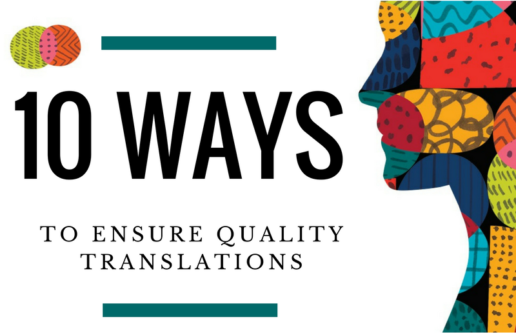No one understands your brand—or your business goals—better than you. So it’s important that your quality expectations are communicated properly to your translation partner at the start of the process. If you are new to the process or simply haven’t worked with translations in some time, don’t worry, we’re here to help.
The meaning of words can easily shift depending on context or intent. These subtle shifts are endlessly useful because they allow us to convey specific feelings, to express perspective, or to describe complex concepts. But words that are not chosen or used carefully can also cause confusion and misunderstanding.
That’s why, at Metaphrasis, we don’t translate we transCREATE. Rather than make literal word-for-word substitutions, which we believe sidestep other components of effective communication, we convey meaning as accurately as possible by adapting a message from one language to another in a way that maintains and fully communicates its intent, tone, and context.
Here are some tips to help improve communication, simplify review cycles, and ensure quality translations:
- Provide your language service provider (LSP) with examples of previous translations that meet your quality expectations (plus examples of some that don’t).
- Encourage translators to understand any additional cultural nuances with your audience/consumer.
- Make sure that your translators fully understand corporate style guidelines and have collaborated on the creation of approved glossaries.
- Provide brand guidelines to help translators and reviewers understand your brand identity and voice.
- For web or app translations, ask your LSP or translator to review content to ensure both message and UI text elements make sense across all media/platforms.
- Supply quality source content (there isn’t a good translation for bad content).
- Give translators a reasonable amount of time to complete their work.
- Communicate regularly with your LSP’s project manager.
- Work toward a long-term relationship with your provider: Quality improves the more familiar they become with your business, content, and terminology.
- Assign a point person that your LSP can reach out to for questions and clarification.
High quality translations enable you to achieve your business goals. When your translations perform well, you’re able to maintain a consistent brand voice while communicating a message that resonates with audiences.
Want more tips on working with a professional translation company?

